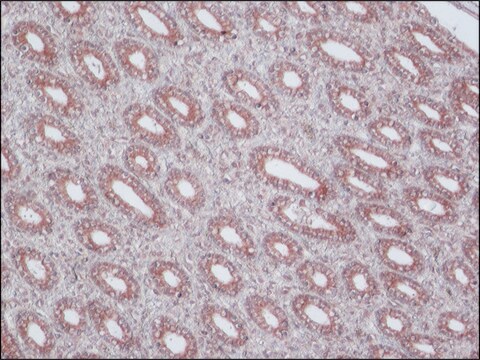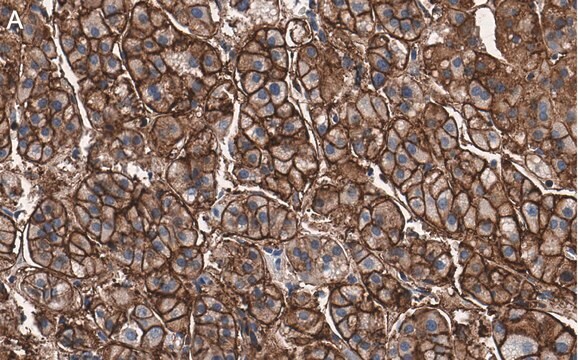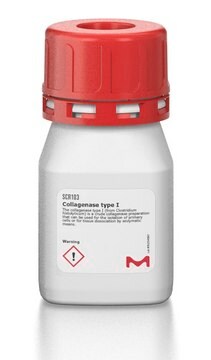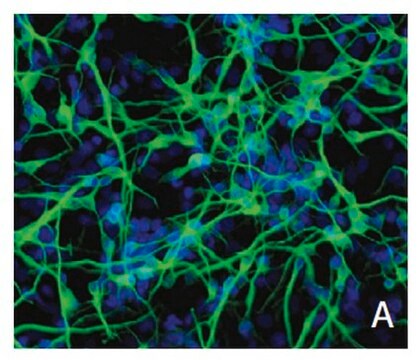MAB4120
Anti-MDR1 Antibody, clone JSB-1
culture supernatant, clone JSB-1, Chemicon®
Synonym(s):
P-glycoprotein, CD243, p170, Pgp
About This Item
Recommended Products
biological source
mouse
Quality Level
antibody form
culture supernatant
antibody product type
primary antibodies
clone
JSB-1, monoclonal
species reactivity
human, hamster
manufacturer/tradename
Chemicon®
technique(s)
flow cytometry: suitable
immunocytochemistry: suitable
immunohistochemistry: suitable (paraffin)
western blot: suitable
isotype
IgG1
NCBI accession no.
UniProt accession no.
shipped in
wet ice
Gene Information
human ... ABCB1(5243)
Related Categories
Specificity
JSB-1 does not cross-react with MDR3 P-glycoprotein. JSB-1 has been shown to cross-react with Pyruvate Carboxylase (PC), an abundant Mr 130,000 mitochondrial enzyme, on both immunoblots and immunohistochemical tissue sections [Rao et al. (1995). J Histo. Cytochem. 43(12):1187-1192.] Unequivocal plasma membrane patterns of immunostaining represent true P-glycoprotein ex-presssion. Weak homogeneous, cytoplasmic, or granular patterns of reactivity may represent staining of the PC cross-reactive epitope rather than positive staining for P-glycoprotein.
Immunogen
Application
Immunohistochemistry on frozen and paraffin embedded tissue
sections: 1:20.
Immunocytochemistry: acetone or air-dried preparations react well.
Western blot
Note: For cellular detection, permeabilization is required.
Optimal working dilutions must be determined by end user.
Metabolism
Toxicology & Drug Resistance
Target description
Physical form
Storage and Stability
Analysis Note
MDR cells
Other Notes
Legal Information
Disclaimer
Not finding the right product?
Try our Product Selector Tool.
recommended
Storage Class Code
12 - Non Combustible Liquids
WGK
WGK 1
Flash Point(F)
Not applicable
Flash Point(C)
Not applicable
Certificates of Analysis (COA)
Search for Certificates of Analysis (COA) by entering the products Lot/Batch Number. Lot and Batch Numbers can be found on a product’s label following the words ‘Lot’ or ‘Batch’.
Already Own This Product?
Find documentation for the products that you have recently purchased in the Document Library.
Our team of scientists has experience in all areas of research including Life Science, Material Science, Chemical Synthesis, Chromatography, Analytical and many others.
Contact Technical Service





